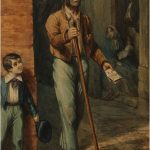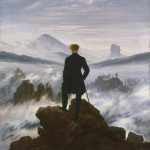Art and spirituality have danced together since the dawn of human civilization. From the earliest cave paintings to the majestic cathedrals of Europe, art has been a conduit for expressing the deepest aspects of human existence. This profound interplay raises a compelling question: Is there a sacred connection between art and spirituality? To explore this, we will journey through history, delve into the symbolic language of art, and examine how modern practices continue to weave these two threads into the fabric of our lives.
Historical Perspectives on Art and Spirituality
Throughout history, art has served as a mirror to humanity’s spiritual aspirations. In ancient civilizations, art was not merely decorative but integral to spiritual and religious practices. The cave paintings of Lascaux, dating back over 17,000 years, are more than just depictions of animals; they are believed to be part of shamanic rituals, aimed at invoking the spirits of the hunt. Similarly, the intricate hieroglyphs and wall paintings of ancient Egypt were deeply entwined with their religious beliefs, portraying gods, the afterlife, and the journey of the soul.
The medieval and Renaissance periods in Europe marked an era where religious art flourished, profoundly influencing the cultural landscape. During this time, the Church was the primary patron of the arts. Artists like Michelangelo and Leonardo da Vinci created masterpieces that conveyed biblical stories and religious fervor. Michelangelo’s Sistine Chapel ceiling and da Vinci’s The Last Supper are not just artistic achievements but also spiritual testaments that have inspired awe and reverence for centuries.
In the East, spiritual art developed along different lines but with no less intensity. Hindu temples adorned with elaborate sculptures, Buddhist stupas, and the Taoist ink paintings of ancient China all reflect deep spiritual underpinnings. These artworks were not mere representations but were considered sacred, imbued with spiritual power and designed to aid in meditation and religious rituals. They provide insight into how art can be a profound expression of faith and spirituality.
Art in ancient Greece and Rome also had spiritual dimensions, though it often focused on mythology rather than direct religious worship. The sculptures of gods and goddesses, the grand temples, and the intricate mosaics found in these civilizations were more than artistic endeavors; they were expressions of a society’s beliefs and values. The gods depicted in these works were integral to the daily lives and spirituality of the people, serving as powerful reminders of their myths and religious stories.
Art as a Medium for Spiritual Expression
Artists throughout history have used their work to convey their spiritual beliefs and experiences. For many, creating art is akin to a spiritual journey. Vincent van Gogh, for instance, saw his art as a way to express his spirituality. Despite his struggles with mental health, van Gogh’s works like Starry Night reveal a deep sense of wonder and a quest for spiritual solace. He once wrote, “I want to touch people with my art. I want them to say ‘he feels deeply, he feels tenderly.’”
Wassily Kandinsky, often considered the father of abstract art, was profoundly influenced by his spiritual beliefs. Kandinsky believed that art could convey spiritual and emotional truths that were beyond the reach of words. His book, “Concerning the Spiritual in Art,” outlines his theory that colors and shapes could evoke specific spiritual responses, and his abstract compositions were intended to resonate on a deeply spiritual level. Kandinsky’s work invites viewers to look beyond the surface and explore the spiritual essence of his art.
Abstract art, in general, offers a unique pathway to exploring spirituality. By stepping away from literal representation, abstract artists can tap into the intangible and the mystical. Mark Rothko’s color field paintings, for example, are vast, meditative spaces that invite viewers into a contemplative state. Rothko himself spoke of his desire to create a spiritual experience, aiming to evoke profound emotional responses that border on the spiritual. His large, enveloping canvases create an environment for deep personal reflection.
Modern artists continue to explore spirituality through their work. Georgia O’Keeffe, known for her large-scale paintings of flowers and natural scenes, often spoke of the spiritual connection she felt with the world around her. Her work invites viewers to look closer, to find the divine in the details of nature. Similarly, artists like Hilma af Klint created works that were deeply influenced by her spiritual beliefs and her involvement in the spiritualist movement, long before abstract art was recognized as a formal genre. These artists demonstrate the enduring power of art to express and explore spirituality.
The Role of Symbolism in Spiritual Art
Symbolism plays a crucial role in spiritual art, serving as a bridge between the material and the spiritual. Symbols are visual shorthand for complex spiritual concepts, accessible even to those who may not share the same religious or spiritual background. Mandalas, for instance, are used in various spiritual traditions as a tool for meditation, representing the universe and the journey towards enlightenment. Their intricate patterns invite viewers to explore their spiritual depths.
The cross is another powerful symbol in spiritual art, representing not only Christianity but also themes of sacrifice, redemption, and the connection between the divine and the earthly. Artists throughout history have used the cross in myriad ways, from the intricate illuminated manuscripts of the medieval period to the stark, modern interpretations found in contemporary art. The cross’s enduring presence in art highlights its profound spiritual significance.
Chakras, often depicted in Hindu and Buddhist art, symbolize the centers of spiritual power in the human body. These vibrant, colorful representations are not just beautiful; they are intended to guide practitioners in their meditation and spiritual practices. The use of color and form in these depictions is deeply symbolic, with each chakra corresponding to different aspects of physical and spiritual health. They serve as visual guides to spiritual healing and balance.
Nature itself is a powerful symbol in spiritual art. Trees, rivers, mountains, and animals often carry profound spiritual significance. For example, in many indigenous cultures, animals are seen as spirit guides or totems, embodying specific qualities and lessons. The depiction of these natural elements in art serves as a reminder of the interconnectedness of all life and the spiritual lessons that can be drawn from the natural world. These symbols help viewers connect with the divine through the beauty of nature.
Art Therapy and Spiritual Healing
Art therapy is a practice that harnesses the power of art for spiritual healing and personal growth. It is based on the idea that the creative process involved in making art is therapeutic and can help individuals express and understand their emotions. Art therapy can be particularly powerful for those dealing with trauma, as it provides a non-verbal outlet for expressing complex feelings. By creating art, individuals can explore their spirituality and find meaning in their experiences.
Creating art can be a form of spiritual healing, offering individuals a way to connect with their inner selves and find meaning in their experiences. Through the act of creation, people can explore their spirituality, confront their fears, and find a sense of peace and fulfillment. This process can be deeply transformative, helping individuals to heal from emotional wounds and rediscover a sense of purpose. Art becomes a journey of self-discovery and spiritual growth.
Art therapists often incorporate spiritual elements into their practice, using techniques like guided imagery, meditation, and the creation of mandalas to help clients access deeper levels of consciousness. These practices can facilitate a sense of spiritual awakening and personal growth, allowing individuals to connect with their higher selves and the divine. The integration of spirituality into art therapy provides a holistic approach to healing.
Testimonials and stories from art therapists and their clients highlight the profound impact that art therapy can have. One client described how creating a series of paintings helped them to process the grief of losing a loved one, finding solace and a sense of connection through their art. Another shared how the act of sculpting allowed them to express feelings of anger and frustration that they had been unable to articulate in words, leading to a sense of liberation and healing. These stories illustrate the transformative power of art therapy.
Modern Interpretations and Practices
Contemporary artists continue to explore and express spirituality through their work, often drawing on diverse cultural and spiritual traditions. Alex Grey, for example, is known for his intricate, visionary paintings that explore themes of consciousness, spirituality, and the interconnectedness of all life. Grey’s work often incorporates elements from various spiritual traditions, creating a visual language that resonates with a wide audience. His art invites viewers to explore their own spirituality.
Yayoi Kusama, another contemporary artist, uses her art to explore her own spiritual experiences. Her immersive installations, filled with repeating patterns and vibrant colors, invite viewers into a meditative space. Kusama’s work reflects her lifelong battle with mental illness and her search for meaning and connection, offering a unique perspective on the relationship between art and spirituality. Her art creates a sense of infinite space and timelessness.
Digital art is also playing an increasingly important role in the exploration of spirituality. Artists are using new technologies to create immersive experiences that engage viewers on a sensory and emotional level. Virtual reality, for instance, allows artists to create environments that can evoke a sense of awe and transcendence, offering new ways to experience spiritual art. These digital experiences can transport viewers to otherworldly realms.
Community art projects are another way in which modern artists are exploring spirituality. These projects often involve collaboration between artists and community members, creating works that reflect collective spiritual and cultural values. Such projects can foster a sense of connection and shared purpose, reinforcing the idea that art is a powerful tool for spiritual expression and community building. They bring people together in a shared spiritual journey.
Cross-Cultural Comparisons
Spiritual art varies greatly across different cultures, yet there are universal themes that resonate across these diverse traditions. Indigenous art, for example, often reflects a deep connection to the land and the spiritual beliefs of the community. In Australia, Aboriginal art uses intricate patterns and symbols to tell stories of the Dreamtime, the sacred era of creation in Aboriginal mythology. These stories are visual expressions of spiritual beliefs.
African spiritual art, too, is rich with symbolism and tradition. Masks, sculptures, and textiles often depict gods, ancestors, and spirits, serving both as religious artifacts and as works of art. These pieces are not only visually striking but also carry deep spiritual significance, reflecting the beliefs and values of the communities that create them. They serve as bridges between the physical and spiritual worlds.
Asian spiritual art encompasses a wide range of traditions, from the serene landscapes of Chinese ink paintings to the elaborate thangkas of Tibetan Buddhism. Each of these traditions has its own unique way of expressing spiritual ideas, yet they all share a common goal: to connect the viewer with the divine. The use of symbolism, color, and form in these works is carefully chosen to evoke specific spiritual responses and to guide the viewer on their spiritual journey.
The universality of spiritual themes in art is evident when comparing works from different cultures. Despite the differences in style and technique, there is a common thread that runs through all spiritual art: the desire to express the ineffable, to connect with something greater than oneself. This shared goal speaks to the universal human experience of seeking meaning and connection through art. It highlights the common spiritual aspirations that unite us all.
The Viewer’s Experience
How do individuals experience spirituality through art? For many, viewing spiritual art can be a profoundly moving experience, evoking feelings of awe, wonder, and transcendence. Art has the power to touch us on a deep emotional level, allowing us to connect with our own spirituality and the spirituality of others. The experience of viewing art can be a meditative and transformative journey.
Personal anecdotes and interviews with art lovers and critics reveal the profound impact that spiritual art can have. One viewer described the feeling of standing before a Rothko painting as akin to a religious experience, a moment of pure, unmediated connection with the divine. Another spoke of the peace and tranquility they felt while meditating in front of a Buddhist mandala, finding a sense of inner calm and clarity. These experiences highlight the personal and emotional impact of spiritual art.
Museums and galleries play a crucial role in promoting spiritual art and making it accessible to a wider audience. By curating exhibitions that focus on spiritual themes, these institutions provide a space for viewers to engage with spiritual art in a meaningful way. The environment of a museum or gallery can also enhance the viewer’s experience, offering a quiet, contemplative space in which to reflect on the art. These spaces provide a sanctuary for spiritual exploration.
The impact of spiritual art extends beyond the individual viewer. By bringing people together to experience art, museums and galleries foster a sense of community and shared purpose. This communal aspect of viewing art can be deeply spiritual, reinforcing the idea that art is a powerful tool for connecting us with each other and with the divine. The shared experience of viewing spiritual art can create a sense of unity and collective spiritual awakening.
Challenges and Controversies
The commercialization of spiritual art presents a significant challenge. As spiritual themes become more popular in the art market, there is a risk that the original spiritual intent of the work may be lost. Artists may feel pressure to create works that are more marketable, rather than staying true to their own spiritual vision. This can lead to a dilution of the spiritual message and a loss of authenticity. The balance between artistic integrity and commercial success is a delicate one.
Debates on authenticity and appropriation in spiritual art are also prevalent. When artists borrow symbols and themes from spiritual traditions that are not their own, it can lead to accusations of cultural appropriation. This is a particularly sensitive issue when the borrowed elements are sacred or have deep spiritual significance. Artists and viewers alike must navigate these complex ethical considerations, balancing artistic freedom with respect for spiritual traditions. Respect and understanding are key in this dialogue.
Balancing artistic freedom with respect for spiritual traditions is a delicate task. While artists should have the freedom to explore and express their spirituality, they must also be mindful of the cultural and spiritual significance of the symbols and themes they use. This requires a deep understanding and respect for the traditions they are drawing from, as well as a commitment to ethical practices. Sensitivity and awareness are essential in this process.
Despite these challenges, the relationship between art and spirituality continues to evolve in exciting ways. As artists push the boundaries of what is possible, new forms of spiritual expression are emerging. These innovations offer new opportunities for viewers to engage with spiritual art and to explore their own spirituality in fresh and meaningful ways. The dialogue between art and spirituality remains vibrant and dynamic, continually opening new pathways for exploration.
Conclusion
In exploring the sacred connection between art and spirituality, we have journeyed through history, examined the symbolic language of art, and looked at modern practices and challenges. From the ancient cave paintings of Lascaux to the immersive digital art of today, art has always been a powerful tool for expressing and exploring spirituality. It allows us to connect with the divine, to find meaning and purpose, and to heal and transform our lives. The sacred connection between art and spirituality continues to inspire and uplift.
The future of spiritual art is bright, with endless possibilities for innovation and exploration. As we continue to seek new ways to express our spirituality, art will remain a vital part of that journey, offering us a way to connect with ourselves, with each other, and with the divine. As artist Marc Chagall once said, “Art is the unceasing effort to compete with the beauty of flowers – and never succeeding.” In this, we find a beautiful metaphor for the spiritual journey: an endless quest for connection, meaning, and beauty. The journey of art and spirituality is one of continual growth and discovery.
If you are inspired by the sacred connection between art and spirituality, I encourage you to explore this relationship in your own life. Visit galleries and museums to experience spiritual art firsthand. Try creating your own art as a form of spiritual expression, and see where the journey takes you. There are countless resources available to help you on this path, from books and articles to online courses and workshops. Engage with art, and let it guide you on your spiritual journey.
- Kandinsky, Wassily. “Concerning the Spiritual in Art.” Dover Publications, 1977.
- O’Keeffe, Georgia. Georgia O’Keeffe: Art and Letters.” University of New Mexico Press, 1987.
- Grey, Alex. “The Mission of Art.” Shambhala Publications, 2001.
- Rothko, Mark. “The Artist’s Reality: Philosophies of Art.” Yale University Press, 2006.
- Kusama, Yayoi. “Infinity Net: The Autobiography of Yayoi Kusama.” University of Chicago Press, 2011.




